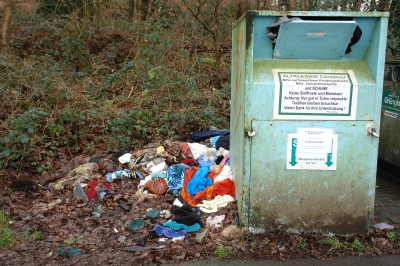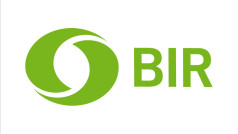So said BIR Textiles Division President Mehdi Zerroug of Framimex in France at its meeting in Berlin that focused on an East African Community (EAC) proposal to phase out imports of used textiles and footwear by 2019. “Second-hand clothing is a product and new clothing is a product – this needs to be understood,” Zerroug insisted.
The EAC comprises six countries, namely Uganda, Kenya, Tanzania, Rwanda, Burundi and South Sudan. Guest speaker Jalia Nabukalu Packwood, Business Development Officer at Bangor University’s Sustainability Lab in the UK, explained that used textiles traders numbered in the many tens of thousands in Uganda and Kenya, for example. More than 80% of all clothing purchases in Uganda were used clothes while Kenya collected US$ 54m in tariffs on used clothing imports in 2013 alone.
But despite the evident social and economic benefits derived from used clothing imports, EAC leaders considered the trade to be a threat to their plans to develop the local textiles manufacturing sector and to grow high-value jobs, Packwood noted. They also wanted to “increase the taxable base” given that people engaged in the second-hand clothing trade were “not paying that much tax”.
The widespread perception in EAC countries was that used clothing imports represented “dumping” and so it was important to change this mindset by emphasising the benefits of this trade, argued Packwood. She called on exporters to the region to develop “win-win” strategies that took account of the needs and goals of EAC countries.
Eric Stubin of the Secondary Materials and Recycled Textiles Association (SMART) in the USA confirmed in a submitted report that his organisation was keen to collaborate with BIR in its response to the proposed EAC import ban. It was important to develop such a partnership approach, agreed Zerroug.
Alan Wheeler of the UK’s Textile Recycling Association (TRA) emphasised that issues for used clothing exporters were not limited to East Africa. For example, an “entry price” mechanism on all imports of used clothing was scheduled to come into force in Ukraine on January 1 next year. Reporting on the UK market, Wheeler confirmed that a quarter of TRA’s collector and processor members had gone bankrupt or closed down since the beginning of the “crash” in used clothing values in 2013.
Regarding the market in Belgium, Pol T’Jollyn of Recutex NV noted stable prices for originals but “very low” or even “negative” values for most recycling materials and wipers. In Italy, according to Sauro Ballerini, recycled feather pillow prices had been hit by the availability of “really cheap” new feathers from China. Textiles recyclers in Germany, meanwhile, were continuing to battle a “cost explosion” following the introduction of the country’s “monstrous” Circular Economy Act, said Michael Sigloch of Gras & Sigloch GmbH & Co.
A report submitted by Osamu Shoji of Shoji & Co., Ltd of Japan spoke of a “terrible” domestic market owing partly to a 30% drop in buying prices and volumes of Japanese originals purchased by South Korea and Malaysia for sorting and re-exporting.








